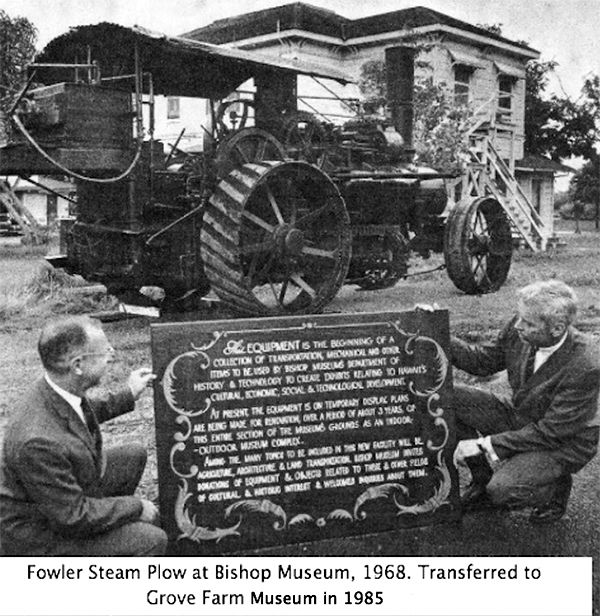• Grove Farm Museum has Hawaii’s last Fowler steam plow Kauai’s Grove Farm Museum possesses the only remaining Fowler steam plow in Hawaii — Fowler Steam Plow No. 11232 — which was originally the property of the Big Island’s Honokaa Sugar
• Grove Farm Museum has Hawaii’s last Fowler steam plow
Kauai’s Grove Farm Museum possesses the only remaining Fowler steam plow in Hawaii — Fowler Steam Plow No. 11232 — which was originally the property of the Big Island’s Honokaa Sugar Co.
In 1968, it was given by Honokaa Sugar Co. and T. H. Davies Ltd. to Honolulu’s Bishop Museum, where it languished on museum grounds until 1985, when it was transferred to Grove Farm Museum.
It has since been partially restored under the direction of Grove Farm Museum’s Robert Schleck and is currently stored in Puhi as part of the museum’s plantation equipment collection.
Fowler self-moving steam plows, manufactured by John Fowler & Co. of Leeds, England, were first introduced into Hawaii in 1881, when the Big Island’s Hamakau Sugar Co. purchased the first pair.
Prior to that date, the plowing of sugarcane fields in Hawaii had been accomplished by men driving teams of oxen, mules or horses pulling plows across cane fields.
Other Hawaiian sugar plantations followed Hamakua’s example, so that by 1912, 43 sets of Fowler steam plows — which made for much faster plowing than that provided by draught animals and therefore allowed for a great increase in planted acreage — were in operation on Hawaiian sugar plantations.
Of those, 14 sets were employed on Kauai: Lihue Plantation Co., three; Hawaiian Sugar Co., three; Makee Sugar Co., two; McBryde Sugar Co., four; and Koloa Sugar Co., two.
Eventually, a total of 67 sets of Fowler steam plows would be used in Hawaii.
Fowler steam plowing required a pair of steam plows — each operated by one man — situated at opposite ends of a field.
The men operated winches mounted on their engines to alternatively draw plowing tackle back and forth across the field between them.
With each pass of the plow, they drove their engines a few feet forward along their route for the next pass.
Fowler steam plows were gradually phased out of operation in Hawaii during the early 1900s by less expensive, lighter, continuous track “caterpillar” tractors using internal combustion engines.


